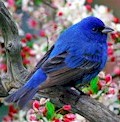Wildlife includes all non-domesticated plants, animals, and other organisms. Domesticating wild plant and animal species for human benefit has occurred many times all over the planet, and has a major impact on the environment, both positive and negative.
Wildlife can be found in all ecosystems, Deserts, rainforests, plains, and other areas-including the most developed urban sites-all have distinct forms of wildlife. While the term in popular culture usually refers to animals that are untouched by human factors, most scientists agree that wildlife around the world is impacted by human activities.
About BeekeepingBeekeeping (or apiculture, from Latin: apis "bee") is the maintenance of honey bee colonies, commonly in hives, by humans. A beekeeper (or apiarist) keeps bees in order to collect their honey and other products that the hive produces (including beeswax, propolis, pollen, and royal jelly), to pollinate crops, or to produce bees for sale to other beekeepers. A location where bees are kept is called an apiary or "bee yard".
Depictions of humans collecting honey from wild bees date to 15,000 years ago.[citation needed] Beekeeping in pottery vessels began about 9,000 years ago in North Africa. Domestication is shown in Egyptian art from around 4,500 years ago. Simple hives and smoke were used and honey was stored in jars, some of which were found in the tombs of pharaohs such as Tutankhamun. It wasn't until the 18th century that European understanding of the colonies and biology of bees allowed the construction of the moveable comb hive so that honey could be harvested without destroying the entire colony.
About BirdwatchingBirdwatching or birding is the observation and study of birds with the naked eye or through a visual enhancement device like binoculars. Birding often involves a significant auditory component, as many bird species are more readily detected and identified by ear than by eye. Most birders and birdwatchers pursue this activity for recreational or social reasons, unlike ornithologists, who are engaged in the formal scientific study of birds.
Both in Britain and in the U.S., 'birders' often differentiate themselves from 'birdwatchers'. At the most basic level the distinction is one of dedication or intensity. Self-described 'birders' are more focused on finding and studying birds than on general observation, and they tend to be more versed in such minutiae as moult, distribution, migration timing and routes, and habitat usage. Dedicated birders tend to invest more in high-quality optical equipment, such as spotting scopes, and many birders travel widely in pursuit of their hobby. Birdwatchers tend to have a more restricted outlook, often confining their birdwatching activity to local nature reserves, their own gardens, or places visited on holiday, and, in general, they invest less in optical equipment
About Whale WatchingWhale watching is the practice of observing whales and other cetaceans in their natural habitat. Whales are watched most commonly for recreation (cf. birdwatching) but the activity can also be for scientific or educational reasons. Whilst individuals do organize private trips, whale watching is primarily a commercial activity, estimated to be worth up to $1billion per annum worldwide to whale watching operations and their local communities. The size and rapid growth of the whale watching industry has led to complex and unconcluded debates with the whaling industry about the best use of whales as a natural resource.
![]() Wildlife and Beekeeping Resources, Articles, and Information
Wildlife and Beekeeping Resources, Articles, and Information
